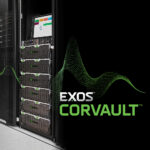What do you do for people who hate coming up with a storage and backup plan for their data. You create a one stop shop for them where all their needs will be catered for. This is what NetApp has done when it created its Data Fabric strategy.
It started off as a way to interconnect storage between different disparate NetApp systems, then it moved to helping customers leverage the cloud. Now the strategy has evolved to become a platform to help customers build services to manage and protect all their data whether it’s on NetApp systems, third party systems or it’s in the cloud.
IT organizations of all sizes are pursuing emerging technologies to complement their existing IT investments. Their goal: to accelerate critical applications, gain data visibility, streamline data protection, and increase operational agility. Meanwhile, budgets continue to shrink.
“In the start up world capex is small. It makes sense to start your business in the cloud,” said NetApp Global’s director of strategy & technology, Mike Riley. “And the cloud model has been disruptive to the industry,” he added, explaining that the storage industry had to change to a consumption model to stay viable.
This has all led to the development of the next generation data centres that you see today. “The qualities of a next gen data centre are that it’s software defined, easy to consume and transparent as to whether it’s on premise or off premise – the user doesn’t know where it is so long as service levels are met,” said Riley.
NetApp offers a comprehensive cloud-integrated data protection solution for NAS file services built on NetApp ONTAP combined with AltaVault cloud-integrated storage. This solution delivers end-to-end array-based backup and recovery for data created on premises with efficient backup to the cloud. With flexible configurations, including NetApp All Flash FAS (AFF) or FAS as primary and optional FAS secondary storage, you can deploy cloud backup within your current environment or a new deployment.
“NetApp is the No 2 Flash provider in the industry. This is so you don’t trade off security for performance,’ said Riley adding that this technology allows data efficiencies to be met so the user doesn’t lose on performance.
NetApp is seeing a lot of upgrades of data centres taking place in the industry and these data centres tend to get smaller. With technology developments, 1.5 terabyte of data can be put on a key ring, whereas before it might take up two floor tiles of space, explained Riley.
Conducting these upgrades non disruptively is also a key requirement for IT departments. “NetApp’s Data Fabric is about non disruptive data transfers with no downtime and and no cutover times,” added Riley.
Backup is also a key driver of the use of storage systems and the number one use case for cloud, said Riley. “What form will backup take – I think tape will be used for onsite backup while the off site backup will be in the cloud,” said Riley. Regulations in the US insist on data being backed up to tape but he thinks this will change because data backups need to be fast and it needs to be stored as cheaply as possible.
NetApp AltaVault offers cost-effective, efficient and secure backup to almost any cloud, public or private location. With SnapMirror integration, AltaVault (physical or virtual appliance) enables long-term retention in the cloud, supporting up to 3,653 Snapshot copies, an equivalent of 10 years of daily backups. Recovery of data is accessed from on-premises cache 95% of the time prior to attempting to retrieve data from the cloud, contributing to reduced retrieval costs associated with common events, such as accidental data deletion. Easy retrieval of data from the cloud eliminates the requirement for tape-based backup and archive systems.
NetApp Snapshot technology creates space-efficient virtual copies and recovery points of local data on any storage system powered by ONTAP with support for up to hundreds of Snapshot copies per volume. The NetApp SnapMirror policy for backup delivers efficient, high-speed replication of Snapshot data, with “incremental forever” data protection. The high-speed block-level data transport retains space-efficient data movement between endpoints to reduce I/O traffic and improve replication performance by as much as 60%. Only the changed blocks are replicated, so I/O traffic is further reduced.








